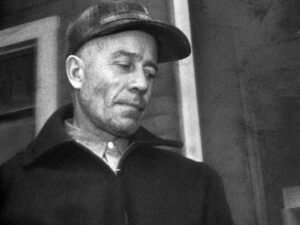Creating an engaging lesson plan can sometimes feel overwhelming, especially with the diverse learning styles and needs of students. I know firsthand that a solid lesson plan can make a world of difference in effectively conveying knowledge. Here, I’m sharing ten stellar lesson plan examples that might spark ideas for your own teaching methodology. These examples are adaptable, allowing for creativity and personal flair while adhering to educational standards.
1. Thematic Learning: A Journey Through History
This lesson plan strikes at the heart of thematic learning, where students explore major historical events through various lenses: geography, culture, and significant figures. The purpose is to create connections between distinct time periods and understand their impacts on modern society.
Objectives: Students will identify key events within a given time period, analyze their causes and effects, and present their findings creatively.
Activities: After an engaging introduction, students can work in groups to research specific themes. They might create timelines, digital presentations, or even skits to bring historical figures to life.
2. The Mystery of Science: Hands-On Experiment
Who doesn’t love a good mystery? This lesson plan invites students to engage in a hands-on science experiment while fostering critical thinking and teamwork.
Objectives: To develop hypotheses, conduct experiments, and draw conclusions based on observational data.
Activities: I recommend starting with a fun mystery box filled with various scientific materials. Students must hypothesize what will happen when they mix different elements, conduct the experiments, and then present their findings to the class.
3. Exploring Poetry Through Art
This lesson plan beautifully intertwines poetry and visual arts, encouraging students to express their understanding creatively.
Objectives: Students will analyze the themes and emotions of selected poems and create art that represents their interpretations.
Activities: After reading a group of poems, each student selects one to analyze. They’ll then create a piece of artwork—be it a painting, collage, or even digital art—that symbolizes their poem’s essence. A gallery walk will allow them to share their creations with classmates.
4. The Great Debate: Understanding Perspectives
Debate can stimulate students’ critical thinking while teaching them to articulate their perspectives respectfully. This lesson plan focuses on current global issues, making learning relevant and engaging.
Objectives: Students will research, articulate, and defend their positions on a chosen topic.
Activities: Begin with an introductory session on debating techniques, followed by assigning topics. Students then research their assigned side, prepare arguments, and engage in structured debates. I’ve found that this promotes essential skills like public speaking and listening.
5. Math in the Real World: Budgeting Project
This lesson plan immerses students in real-life applications of math while teaching essential financial literacy skills.
Objectives: Students will create budgets based on hypothetical incomes and expenses.
Activities: After a brief introduction to budgeting concepts, students will simulate a monthly budget. They’ll account for rent, groceries, savings, and discretionary spending. By the end, they can analyze their budgets, learning to prioritize needs versus wants.
6. Cultures Around the World: International Day
The International Day lesson plan allows students to dive deep into various cultures, creating a vibrant display of global traditions and customs.
Objectives: Students will explore selected cultures by researching customs, cuisine, and celebrations.
Activities: Each student chooses a country, conducts research, and prepares a presentation. On International Day, students share their findings through posters, food samples, and traditional attire. This fosters appreciation and understanding of cultural diversity.
7. Creative Writing Workshop: Building Narratives
Writing can be an incredible means of self-expression, and this workshop encourages students to tap into their creativity and storytelling skills.
Objectives: Students will create original narratives that engage readers through descriptive language and character development.
Activities: I suggest starting with warm-up exercises like prompts and free writing to spark creativity. Afterward, students craft their short stories, focusing on structure, character, and theme. Peer reviews can foster collaboration and constructive criticism.
8. STEAM Challenges: Building Bridges
Incorporating elements from Science, Technology, Engineering, Arts, and Math (STEAM) can enhance problem-solving skills. For this lesson, students engage in building a bridge using limited materials.
Objectives: To apply engineering principles and creative thinking in constructing a bridge that can hold a specific weight.
Activities: Split students into teams and provide materials like straws, tape, and paper. After planning and construction, each bridge is tested for strength. Students reflect on the design process and what they learned about teamwork and innovation.
9. Digital Citizenship: Navigating the Online World
Teaching digital citizenship is vital in today’s tech-savvy environment. This lesson is designed to help students use technology responsibly and effectively.
Objectives: Students will learn about online safety, privacy, and etiquette.
Activities: Start with a discussion on the digital footprint and the implications of online behavior. Students will create infographics that outline best practices for staying safe online and respecting others on the digital platform.
10. Environmental Science: Sustainability Projects
With ongoing concerns about climate change, fostering an understanding of environmental science is crucial. This lesson plan encourages action and awareness.
Objectives: Students will investigate sustainability practices and create projects that promote environmental stewardship.
Activities: After discussing sustainability issues, students can choose projects like creating a recycling program at school, developing a garden, or initiating clean-up campaigns. Presenting their projects enables them to advocate for positive change within their community.
Conclusion
Each of these lesson plans showcases diverse teaching methods and content areas, providing ample opportunities for creativity, collaboration, and critical thinking. I hope these examples inspire you to design your own engaging and effective lesson plans. Education is about connection—between students and content, among peers, and with the world. With the right planning, teaching can be a journey filled with discovery and joy. So go ahead, experiment, and let your passion for teaching shine through!




